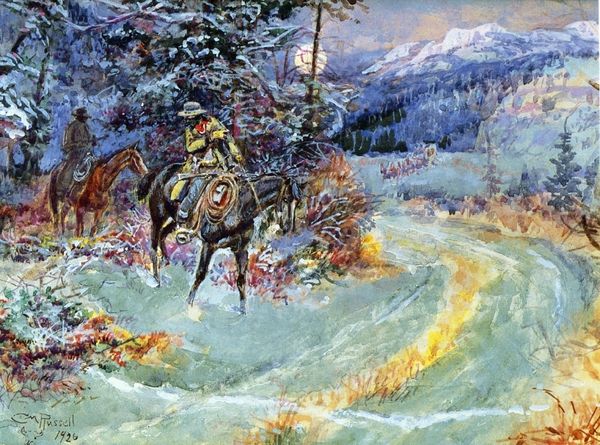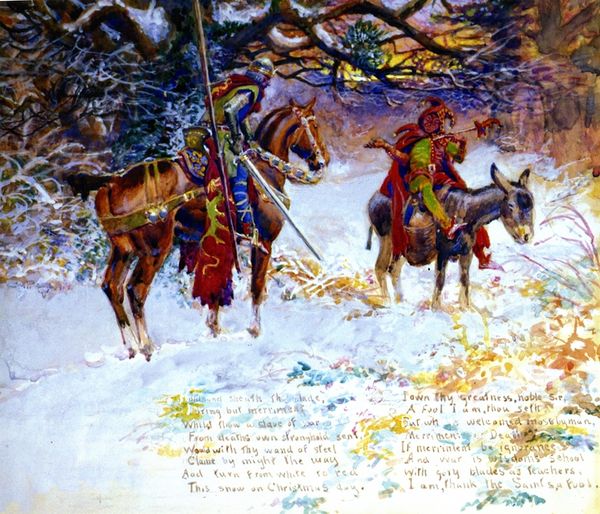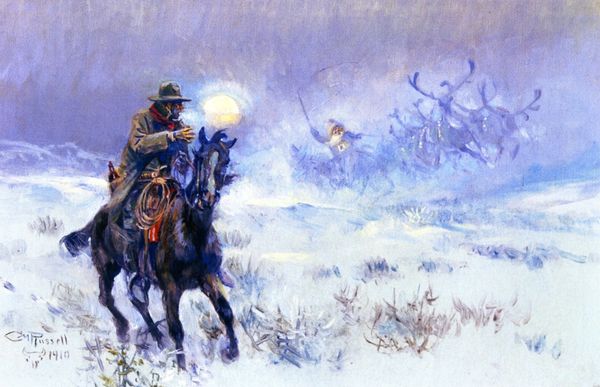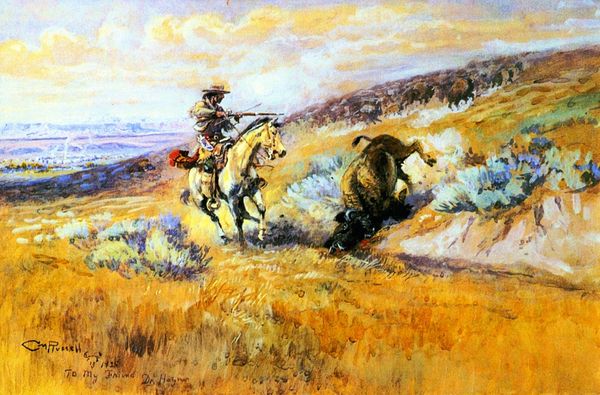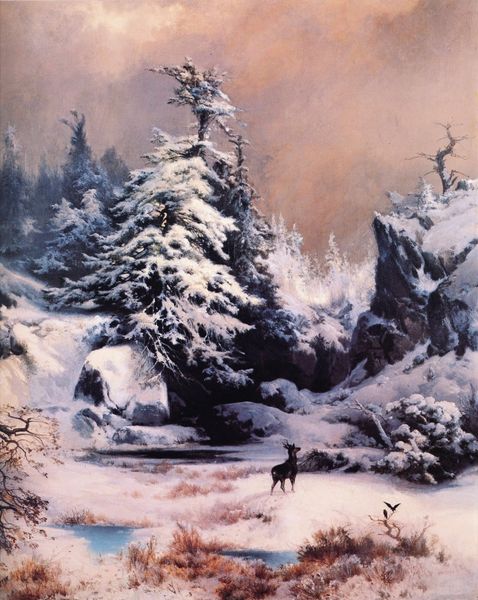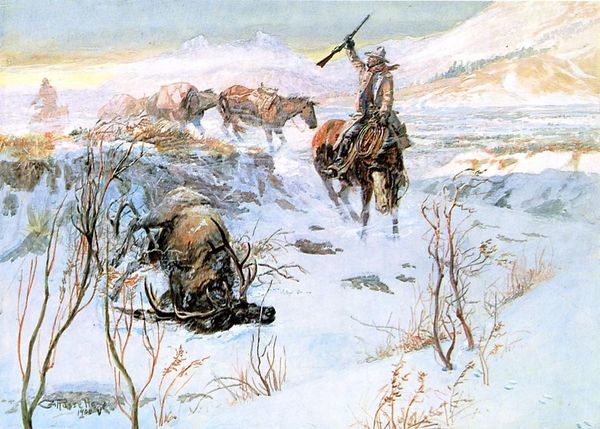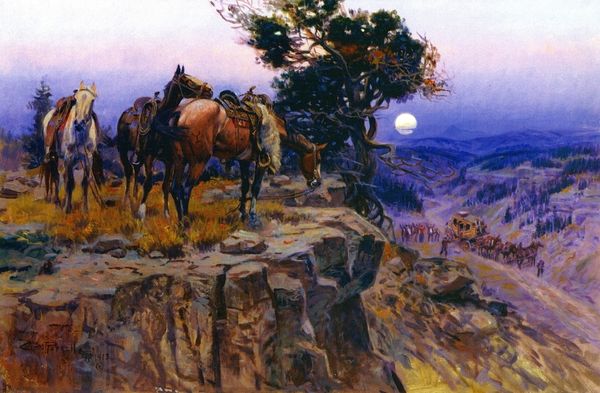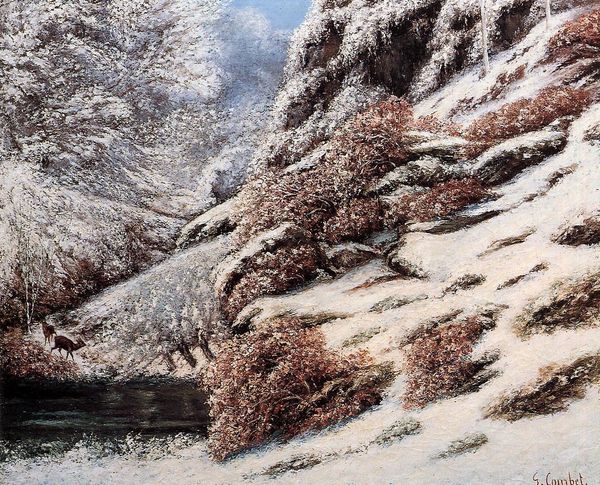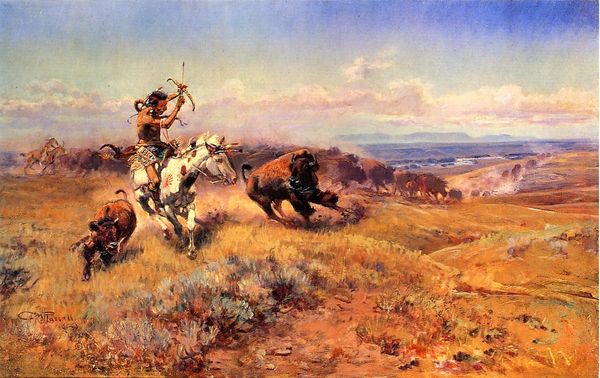
painting, plein-air, oil-paint
#
tree
#
painting
#
plein-air
#
oil-paint
#
landscape
#
winter
#
impressionist landscape
#
possibly oil pastel
#
history-painting
#
expressionist
#
realism
Copyright: Public domain
Editor: Here we have Charles M. Russell's "Wolf and Beaver," painted in 1921. It appears to be an oil painting, depicting a snowy landscape with a rider on horseback. I'm immediately struck by the use of color – the cool blues and purples against the warmth of the browns create an interesting tension. How do you read the formal qualities of this piece? Curator: Precisely. Note the pronounced diagonal thrust established by the hillside and the fallen tree trunk. This imparts a sense of dynamic movement to the composition. Consider also how the artist deploys impasto in the foreground snow, juxtaposed with the smoother handling of the atmospheric perspective in the distant landscape. Editor: Yes, I see that now. The texture really does bring the foreground forward. But is the eye not also drawn upward by the positioning of the rider and the pale horizon that bisects the artwork? Curator: An astute observation. The rider acts as a pivotal element, mediating between the immediate foreground and the implied vastness beyond. Further examine the formal tension between the organic forms – the trees, the figures – and the geometric suggestion within the sign. How do these formal relationships contribute to the overall reading of the work? Editor: That's something I hadn’t noticed initially – the tension between the geometric and the organic. It makes me wonder about Russell’s intent. Considering the landscape as form helps me think beyond its surface meaning and into its constructed elements. Thank you! Curator: Indeed. The structural underpinnings reveal far more than mere representational content. A close visual analysis of the compositional and material choices rewards us with a deeper understanding.
Comments
No comments
Be the first to comment and join the conversation on the ultimate creative platform.
